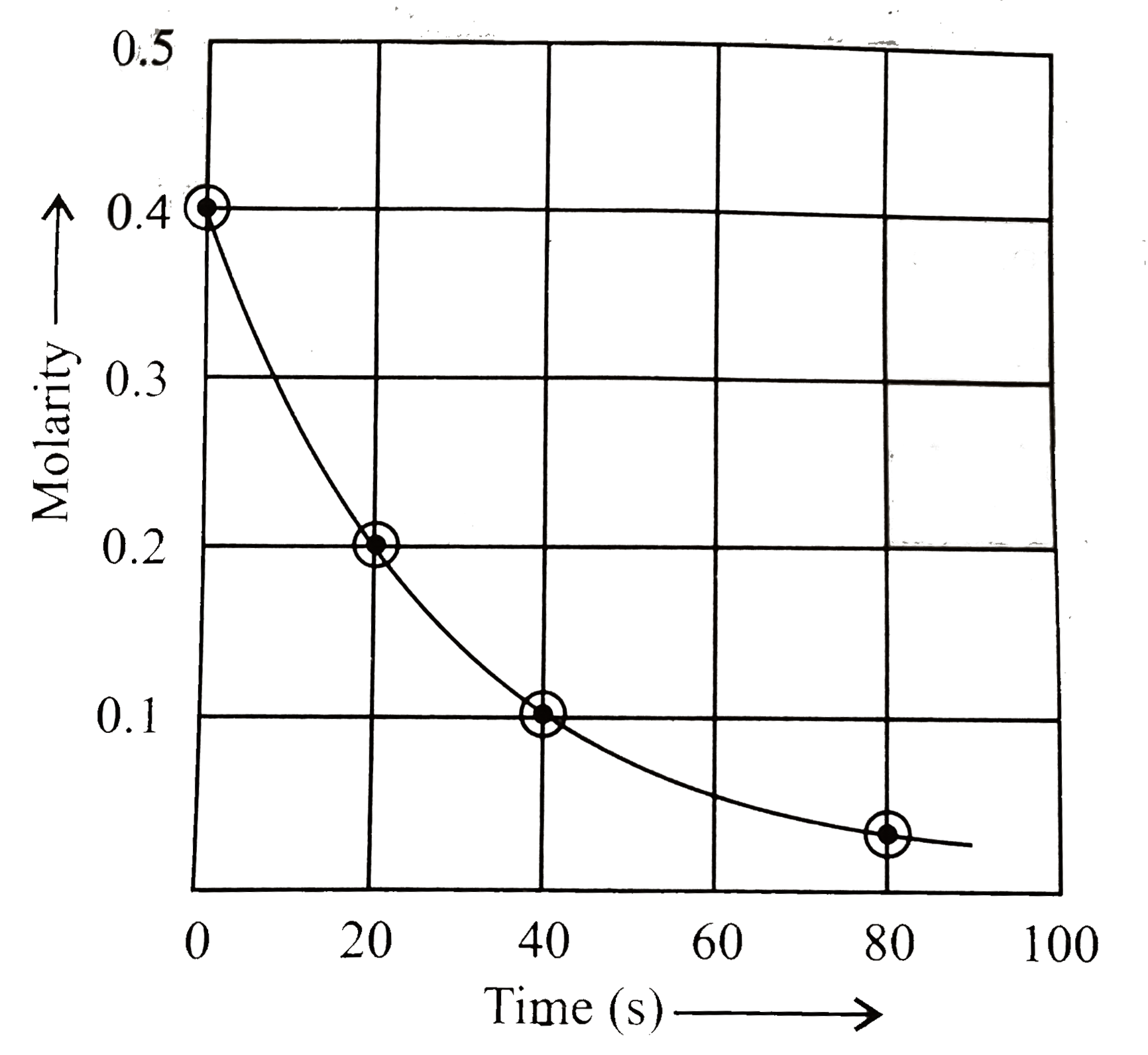. एक बन्द पात्र में अभिक्रिया 3A→2B+Cहोती है। 'A' के विलुप्त होने की दर −d(A)dt,0.01molL−1S−1 है। dBdt एवं [dCdt] ज्ञात कीजिए।
अभिक्रिया , 3A→2B+C
अभिक्रिया का वेग =13(−d[A]dt)=12(+d[B]dt)=(d[C]dt)
(d[B]dt)=23(−d[A]dt)
(d[B]dt)=23×0.01=0.0067molL−1s−1
13(−d[A]dt)=d[C]dt
d[C]dt=13×0.01=0.0033molL−1s−1
Topper's Solved these Questions
- BOOK - MITTAL PUBLICATIONCHAPTER - रासायनिक बलगतिकीEXERCISE - अभ्यास (4.1)10videos
रासायनिक बलगतिकी
- BOOK - MITTAL PUBLICATIONCHAPTER - रासायनिक बलगतिकीEXERCISE - अभ्यास (4.2)13videos
रासायनिक बलगतिकी
- BOOK - MITTAL PUBLICATIONCHAPTER - बहुलक EXERCISE - विभिन्न प्रतियोगी परीक्षाओं में पूछे गये प्रश्न40videos
बहुलक
- BOOK - MITTAL PUBLICATIONCHAPTER - विघुत रसायन EXERCISE - विभिन प्रत्योगी परीक्षा में पूछे गए प्रश्न (बहुविकल्पीय प्रश्न )33videos
विघुत रसायन
Similar Questions
अभिक्रिया के वेग पर ताप का क्या प्रभाव पड़ता है?
14:30View Solutionतीन से अधिक आण्विकता रखने वाली अभिक्रियाएँ कम होती हैं, क्यों ?
14:30View Solutionएमाइलोपेक्टिन किसका शाखित बहुलक है?
04:14View Solutionजिंक को आयरन पर लेपित करने से जस्तेदार लोहा (आयरन) बनता है, जबकि इसका विपरीत सम्भव नहीं। इसका कारण है -
View SolutionFor the reaction: aA+bB→cC+dD
Rate =dxdt=−1ad[A]dt=−1bd[B]dt=1cd[C]dt=1dd[D]dt
For reaction 3BrOɵ→BrOɵ3+2Brɵ, the value of rate constant at 80∘C in the rate law for −d[BrOɵ]dt was found to be 0.054Lmol−1s−1. The rate constant (k) for the reaction in terms of d[BrOɵ3]dt is01:57View SolutionFor the reaction: aA + bB rarr cC+dD Rate = (dx)/(dt) = (-1)/(a)(d[A])/(dt) = (-1)/(b)(d[B])/(dt) = (1)/( c)(d[C])/(dt) = (1)/(d)(d[D])/(dt) A reaction follows the given concentration-time graph. The rate for this reaction at 20 s will be
01:57View SolutionThe reaction 3A to 2B+C is carried in a closed vessel. The rate of disappearance of A[(-d[A])/(dt)] is 0.01 molL^(-1)s^(-1) . Calculate (d[B])/(dt) and (d[C])/(dt) .
02:19View SolutionA + 2 B to C + D . if - (d [A])/(dt ) = 5 xx 10^(-4) mol l^(-1) s^(-1) , then - (d[B])/(dt) is
02:25View SolutionA+ 2B rarr C+D." If "-(d[A])/(dt)=5xx10^(-4)" mol L"^(-1) s^(-1)," then "-(d[B])/(dt) is :
02:16View SolutionA+2B→C+D. If −d[A]dt=5×10−4 mol L−1s−1, then −d[B]dt is :
View SolutionFor the reaction: aA+bB→cC+dD
Rate =dxdt=−1ad[A]dt=−1bd[B]dt=1cd[C]dt=1dd[D]dt
For reaction 3BrOɵ→BrOɵ3+2Brɵ, the value of rate constant at 80∘C in the rate law for −d[BrOɵ]dt was found to be 0.054Lmol−1s−1. The rate constant (k) for the reaction in terms of d[BrOɵ3]dt isView SolutionFor the reaction: aA+bB→cC+dD
Rate =dxdt=−1ad[A]dt=−1bd[B]dt=1cd[C]dt=1dd[D]dt
A reaction follows the given concentration-time graph. The rate for this reaction at 20s will be
 View Solution
View SolutionA+2B→C+D. If −d[A]dt=5×10−4 mol L−1s−1, then −d[B]dt is :
View Solutionदर नियम, r = (d[A])/(dt) = K [A]^2[B]^(3//2)[C]^(-1/2) का पालन करने के लिए अभिक्रिया A + B + C to उत्पाद का निर्माण होता है। अभिक्रिया की समग्र कोटि है-
View Solutionअभिक्रिया xA to yB में, log{-(d[A])/(dt)} = "log" {+ (d[B])/(dt)} + 0.3 तब, x : y है:
View Solution

